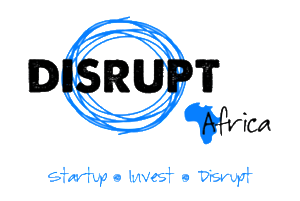Opportunity and capability perceptions amongst South African entrepreneurs have dropped in the wake of political and economic setbacks in the country.
This is according to this year’s Global Entrepreneurship Monitor (GEM) South Africa report, which says the drop in both opportunity and capability perceptions relative to 2015 is disappointing, but that the former is of particular concern as this had been steadily improving since 2009.
GEM attributes the fall to the fact South Africa has over the last year experienced a series of political and economic setbacks, such as a politically-motivated reshuffle of the cabinet, the downgrading of South Africa to junk status, and GDP growth of only 0.3 per cent in 2016.
The drop in opportunity and capability perceptions – which stood at 38 per cent – comes despite the consistently positive attitudes towards – and awareness of – entrepreneurship reported by South Africans, while both perceived opportunity and perceived capabilities levels are below the averages for efficiency-driven economies and the levels for the Africa region as a whole.
“Given that a significant challenge faced by South Africa is chronically high levels of unemployment and underemployment, the persistent trend of low entrepreneurial intention is of concern,” said GEM.
“Entrepreneurial intentions in South Africa have dropped by more than a third – from 15.4 per cent to 10.1 per cent – when compared to 2013 and almost halved when compared to 2010. Entrepreneurial intentions in South Africa are significantly lower than for the African region as a whole – the regional average is four times higher than for South Africa – while the average for the efficiency-driven economies is more than double South Africa’s score.”
Levels of early-stage entrepreneurial activity have also dropped considerably compared to 2015. The nascent entrepreneurial rate is down by 30 per cent, with the TEA rate down 25 per cent.
“In terms of early-stage entrepreneurial activity, there is a wide gap between South Africans and their African counterparts – TEA rates in the Africa region as a whole are 2.5 times higher than for South Africa. South Africa also has one of the lowest TEA rates among the efficiency-driven economies, ranked 28th out of 32 efficiency-driven economies,” GEM said.
On a more positive note, almost three-quarters of South African entrepreneurs were opportunity-driven, which is higher than the average for efficiency-driven economies and the average for the Africa region. In fact, it is South Africa’s highest rate of opportunity-driven entrepreneurship since 2008.
“This suggests that although fewer entrepreneurs are engaged in TEA activity in 2016, these individuals are pulled into entrepreneurship in order to pursue an opportunity, rather than pushed by necessity,” said GEM.
However, South Africa’s ratio of TEA to business discontinuance indicates that for every person exiting a business in 2016, 1.5 were engaged in early-stage entrepreneurial activity, which suggests a fairly high proportion of discontinuance to business startups.
Though around 12 per cent of South African business exits in 2016 were for positive reasons, 67 per cent of businesses closed for financial reasons.
“Problems accessing finance, in particular, remain a significant constraint – as was the case in 2015 – with more than a quarter of entrepreneurs exiting their businesses for this reason,” said GEM.
“This is also a more pressing problem for South African entrepreneurs, compared to their regional counterparts – 50 per cent more South African entrepreneurs discontinued their businesses because of lack of access to finance, compared to the average for Africa.”
In fact, South African entrepreneurs are almost three times more likely to exit their businesses because of problems accessing finance than entrepreneurs in efficiency-driven economies.
“It is clear that access to finance is a significant constraint for early-stage entrepreneurs in South Africa, and has a profound effect on business sustainability,” the report noted.


